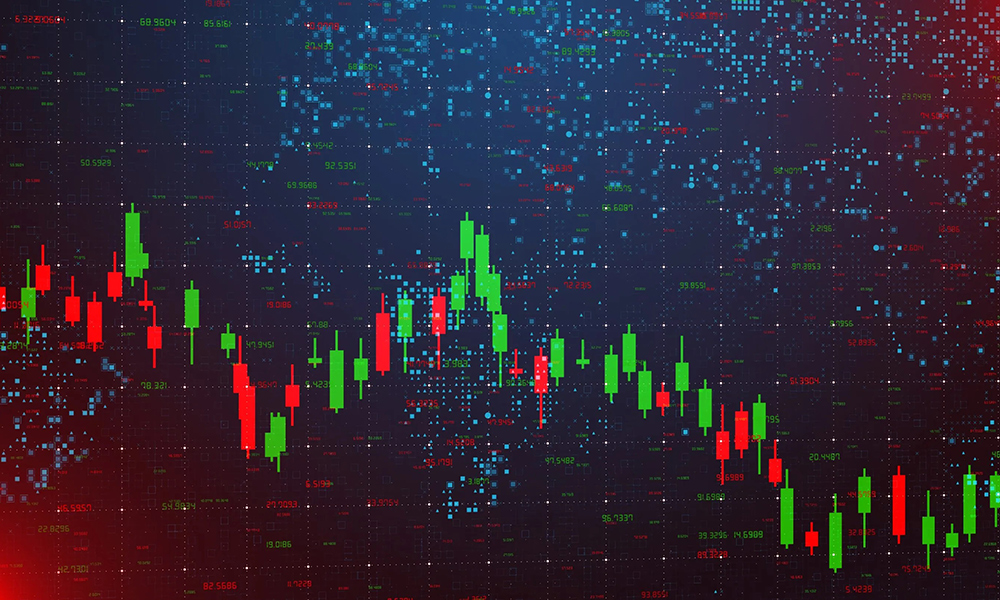
收益率曲线倒挂的开发者表示,这个经济衰退指标已经不只是对未来经济下滑的警告,正影响着现在的经济。
当长期债券收益率低于短期债券收益率时,就发生了收益率曲线倒挂。从历史上看,当投资者看到近期增长风险增多并要求更高溢价时,就会出现这种反常的情况。
杜克大学(Duke University)金融学教授坎贝尔·哈维最先提出将收益率曲线倒挂作为一个预测经济衰退的主要指标。他在上周五对美国消费者新闻与商业频道(CNBC)表示,该指标预测了从20世纪60年代以来的八次经济衰退,没有出现过误报。
如今收益率曲线倒挂已经持续了约20个月,但始终没有发生经济衰退,却令人们对它的准确率产生了质疑。但哈维表示,从历史上看,收益率曲线倒挂的提前时间为6至23个月。
与此同时,他补充说,收益率曲线倒挂已经变成了一种“因果机制”,可能放慢经济增长速度。
他说道:“因此人们看到收益率曲线倒挂,它会改变人们的行为。作为CEO,当你看到收益率曲线倒挂时,你就不太可能进行‘孤注一掷’的投资。”
哈维表示,美联储激进地收紧货币政策,导致收益率曲线倒挂,要消除它所带来的破坏,需要美联储大幅降息。
美联储加息确实将消费者通胀率从2022年年中的9.1%,下降到最近的只有2.9%,这是三年来的最低年度通胀率。但在这个过程中,美国经济降温。
哈维解释说,由于收益率曲线倒挂有可靠的记录,并且能够改变人们的行为,因此它也可以用于帮助管理风险,这意味着当今年晚些时候或明年早些时候发生经济衰退时,公司能够做好准备。
否则,如果发生经济衰退,而公司措手不及,它们将不得不突然裁员,从而加剧经济衰退。
他补充说:“因此,这个指标实际上使经济增速放缓,但也导致了一种情况,即经济下滑却不会发生硬着陆。它代表经济增速放缓,但不会发生类似于全球金融危机的情况。”
疲软的就业报告最初曾触发警报,人们对于经济衰退的担忧在上一周有所减轻,但担忧的情绪依旧存在。例如,金价再创新高,部分原因正是由于对经济的担忧。
“黑天鹅”投资者、私募对冲基金Universa Investments的创始人兼首席投资官马克·斯皮茨纳格对《财富》杂志表示,史上最严重的市场泡沫即将破灭,美国将在今年陷入经济衰退。
他表示:“这次的情况与以往没有区别,任何认为此次情况不同的人并没有真正关注到问题的本质。唯一的区别在于即将破灭的泡沫的规模是前所未见的。”(财富中文网)
译者:刘进龙
审校:汪皓
收益率曲线倒挂的开发者表示,这个经济衰退指标已经不只是对未来经济下滑的警告,正影响着现在的经济。
当长期债券收益率低于短期债券收益率时,就发生了收益率曲线倒挂。从历史上看,当投资者看到近期增长风险增多并要求更高溢价时,就会出现这种反常的情况。
杜克大学(Duke University)金融学教授坎贝尔·哈维最先提出将收益率曲线倒挂作为一个预测经济衰退的主要指标。他在上周五对美国消费者新闻与商业频道(CNBC)表示,该指标预测了从20世纪60年代以来的八次经济衰退,没有出现过误报。
如今收益率曲线倒挂已经持续了约20个月,但始终没有发生经济衰退,却令人们对它的准确率产生了质疑。但哈维表示,从历史上看,收益率曲线倒挂的提前时间为6至23个月。
与此同时,他补充说,收益率曲线倒挂已经变成了一种“因果机制”,可能放慢经济增长速度。
他说道:“因此人们看到收益率曲线倒挂,它会改变人们的行为。作为CEO,当你看到收益率曲线倒挂时,你就不太可能进行‘孤注一掷’的投资。”
哈维表示,美联储激进地收紧货币政策,导致收益率曲线倒挂,要消除它所带来的破坏,需要美联储大幅降息。
美联储加息确实将消费者通胀率从2022年年中的9.1%,下降到最近的只有2.9%,这是三年来的最低年度通胀率。但在这个过程中,美国经济降温。
哈维解释说,由于收益率曲线倒挂有可靠的记录,并且能够改变人们的行为,因此它也可以用于帮助管理风险,这意味着当今年晚些时候或明年早些时候发生经济衰退时,公司能够做好准备。
否则,如果发生经济衰退,而公司措手不及,它们将不得不突然裁员,从而加剧经济衰退。
他补充说:“因此,这个指标实际上使经济增速放缓,但也导致了一种情况,即经济下滑却不会发生硬着陆。它代表经济增速放缓,但不会发生类似于全球金融危机的情况。”
疲软的就业报告最初曾触发警报,人们对于经济衰退的担忧在上一周有所减轻,但担忧的情绪依旧存在。例如,金价再创新高,部分原因正是由于对经济的担忧。
“黑天鹅”投资者、私募对冲基金Universa Investments的创始人兼首席投资官马克·斯皮茨纳格对《财富》杂志表示,史上最严重的市场泡沫即将破灭,美国将在今年陷入经济衰退。
他表示:“这次的情况与以往没有区别,任何认为此次情况不同的人并没有真正关注到问题的本质。唯一的区别在于即将破灭的泡沫的规模是前所未见的。”(财富中文网)
译者:刘进龙
审校:汪皓
The inverted yield curve—a recession indicator with a decades-long track record of accuracy—has evolved beyond serving as a warning of a future downturn and now sways the economy, its creator said.
The inversion takes place when long-term bond yields dip below short-term ones, an abnormality that historically has occurred when investors see more growth risk in the near future and demand a higher premium.
Campbell Harvey, a Duke University professor of finance who originated the idea of the inverted yield curve as a leading indicator, told CNBC on Friday that it has predicted all of the eight past recessions going back to the 1960s without any false positives.
It has been flashing for about 20 months, and the continued absence of a recession in that time has raised doubts about its accuracy. But Harvey said the lead time has historically ranged from six to 23 months.
Meanwhile, the inverted yield curve has recently changed to become a “causal mechanism” that can slow economic growth, he added.
“So people see an inverted yield curve, it changes their behavior,” he said. “So as a CEO, when you see an inverted yield curve, you’re just less likely to pull the trigger on a bet-the-farm type of investment.”
The Federal Reserve’s aggressive tightening caused the yield curve to invert, and it needs to undo the damage by cutting rates aggressively, too, Harvey said.
To be sure, Fed rate hikes have helped bring consumer inflation down from 9.1% in mid-2022 to just 2.9% in the latest reading, the lowest annual rate in three years. But in the process, the economy has cooled off.
Given the inverted yield curve’s strong track record and ability to change behavior, it can also be used to help manage risk, meaning companies will be ready if a recession arrives later this year or early next year, Harvey explained.
Otherwise, a recession that takes companies by surprise will force them to suddenly slash their payrolls, worsening a downturn.
“So think of this indicator as actually slowing economic growth but leading to a situation where we can have a downturn without a hard landing,” he added. “So slower growth rather than something like the Global Financial Crisis.”
Recession fears eased over the past week after a weak payroll report initially set off alarms, but concerns continue to linger. For instance, gold prices have set fresh record highs, owing in part to worries about the economy.
And “Black Swan” investor Mark Spitznagel, founder and CIO of private hedge fund Universa Investments, told Fortune that a recession is coming this year as the biggest market bubble in history will soon pop.
“It’s not different this time, and anybody who says it is, really isn’t paying attention,” he said, adding: “The only difference is the magnitude of this bubble that’s popping is bigger than we’ve ever seen.”






